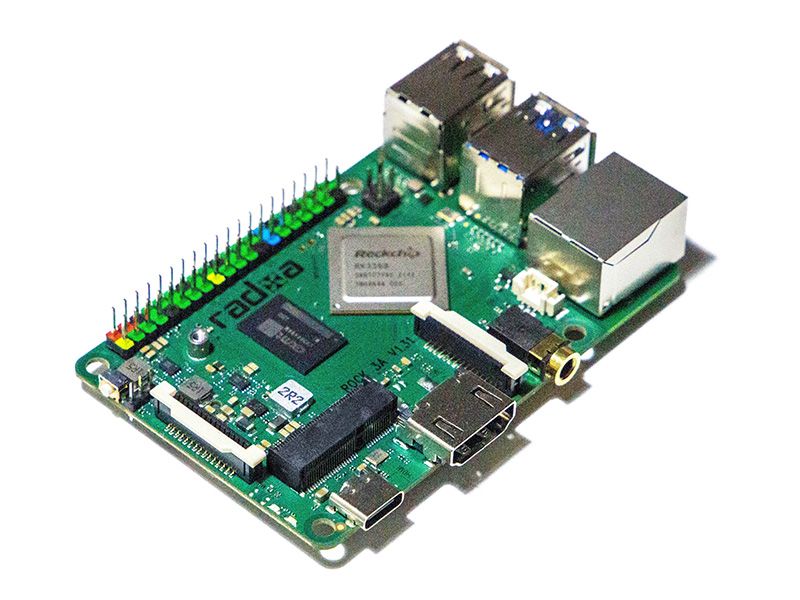
Rock 3C by Radxa Limited
This is the documentation for ROCK 3 Model C, written by Radxa Team with community contributions. ROCK 3C features a quad core Cortex-A55 ARM processor, 32bit 3200Mb/s LPDDR4, up to 1920x1080@60 HDMI, MIPI DSI, MIPI CSI, 3.5mm jack with mic, USB Port, GbE LAN, PCIe 2.0, 40-pin color expansion header.
Features
- RK3566 Quad-core Cortex-A55, frequency 1.6Ghz Mali G52
- 1/2/4GB LPDDR4 2112MT/s
- eMMC μSD card (μSD slot supports up to 128 GB μSD card) M.2 2230 SSD (M.2 connector supports up to 1TB M2 NVME SSD)
- HDMI 2.0 up to 1920x1080 60p MIPI DSI 2 lanes via FPC connector HDMI and MIPI DSI can not work at the same time
- 3.5mm jack with mic HD codec that supports up to 24-bit/96KHz audio. Camera - MIPI CSI 2 lanes via FPC connector, support up to 800 MP camera.
- 802.11 ac WiFi 5/ BT 5
- USB 2.0 OTG X1(middle upper one), hardware switch for host/device switch USB 3.0 HOST X1 USB 2.0 HOST X2
- GbE LAN with Power over Ethernet (PoE) support additional HAT is required for powering from PoE
- 40-pin expansion header 5 x UART 1 x SPI bus 2 x I2C bus 6 x PWM 1 x ADC 6 x GPIO 2 x 5V DC power in 1 x 3.3V DC power in
- RTC RTC battery connector for time backup(optional)
- USB type C 5V, 5V/3A is suggested when using without SSD, 5V/5A is suggested
Purchase
Contribute
Have some info to add for this board? Edit the source for this page here.
Adafruit Blinka Installation
We use a special library called adafruit_blinka (named after Blinka, the CircuitPython mascot) to provide the layer that translates the CircuitPython hardware API to whatever library the Linux board provides.
For example, on Raspberry Pi we use the python RPi.GPIO library. For any I2C interfacing we'll use ioctl messages to the /dev/i2c device. For SPI we'll use the spidev python library, etc. These details don't matter so much because they all happen underneath the adafruit_blinka layer.
